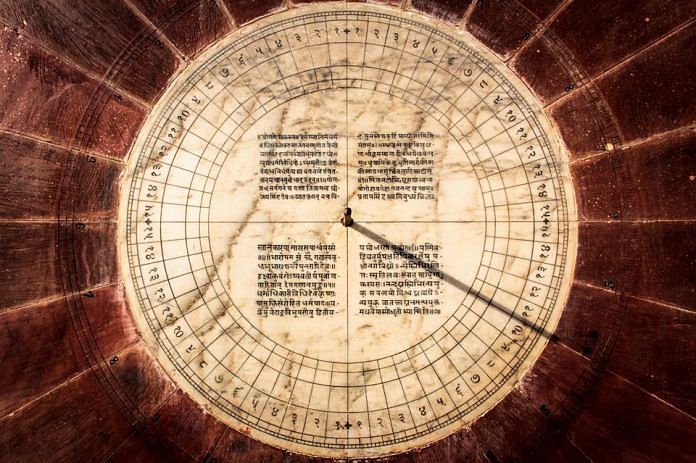New Delhi: Aiming to revive the traditional culture of ‘observational astronomy’, the Indian Knowledge Systems (IKS) division of the Union Ministry of Education has invited school students, undergraduates, for-profit companies, and trusts to recreate indigenous and traditional astronomical instruments—some of which were mentioned in classical Sanskrit texts.
The division, which operates as an autonomous body under the Ministry of Education, announced the competition Friday, highlighting India’s rich and illustrious tradition in astronomy.
The IKS noted that pioneers like Vṛddha Garga, Āryabhaṭa, Mādhavachārya, Nīlakanṭha Somayāji and Pathani Samanta have made significant contributions to ‘observational astronomy’ and mathematics. “These achievements were supported by a range of ingenious and innovative instruments designed to aid visual astronomy. The challenge is to recreate the physical forms of these traditional instruments,” the division stated in its official notification.
Explaining the initiative’s significance, Ganti S. Murthy, National Coordinator of the Indian Knowledge Systems division, said the aim is to revive India’s rich legacy of observational astronomy.
“India has a very great astronomical tradition. Again, when I say astronomy, I’m distinguishing it from astrology. That is not what it is… That is what our ancestors were doing and we somehow lost it with all of these things. We need to recreate it. That’s why we are trying to push this,” he told ThePrint.
“Observational astronomy means you can see the stars, look at the planets and other celestial bodies, and try to predict where they will be using observations… How many of us know where the Sun or the Moon is today? Or a planet? We don’t even observe the skies anymore. The idea is to rekindle that long-term observation ability among students,” he said.
Ancient shadows to majestic observatories
The instruments listed by the IKS division for recreation are divided into two categories, reflecting different periods and levels of complexity in India’s astronomical tradition.
The first category includes some of the earliest instruments used in ancient India for basic astronomical observations. These include the Shanku (a gnomon—the part of a sundial that casts a shadow—used to measure the Sun’s altitude), Manayantra, and Dhanuryantra—devices mentioned in classical Sanskrit texts for measuring angles and distances. Various types of sundials—horizontal, vertical, equatorial, polar, and analemmatic—were used to track time based on the Sun’s shadow.
The second category features more advanced instruments, many of which were part of the 18th-century observatories built by Maharaja Sawai Jai Singh II, such as the Jantar Mantar. These include the Samrat Yantra, Jay Prakash Yantra, Ram Yantra, Digamsa Yantra, Daksinottara Bhitti Yantra, Nadi Valaya, and Sasthamsa Yantra—all used for precise astronomical measurements and celestial observations.
On the continued relevance of these traditional instruments, Murthy said: “They are as useful today as they were earlier. These are observational astronomical instruments… You can use (them) today also, that is the whole point. Otherwise, why would we try to recreate something that is not useful today?”
Participation and evaluation
The competition invites three categories of participants: Category 1 includes teams of 3 to 5 students from classes 6 to 12 within the same school, recreating instruments from the first category of instruments. Category 2 is for teams of 3 to 5 undergraduate students, possibly from multiple institutions, focusing on the second category of instruments. Category 3 welcomes all, including companies and trusts, to recreate instruments from both categories.
Category 1 encourages use of sustainable materials. Categories 2 and 3 require explanations of the instrument’s workings and underlying mathematics, encouraging passive innovations and extensions to traditional designs. Category 3 also emphasises simplicity, pedagogical utility, durability, and cost-effectiveness.
Instruments will be judged 25 percent each on presentation clarity, ease of construction, cost and accuracy, and creativity. “Only entries grounded in traditional observational astronomy with proper references will be considered,” the division said in its notification.
The details of entry submission will be announced soon. The final competition for the top eight teams will take place during the international conference tentatively scheduled in January next year. The winning entries will win up to Rs 1 lakh.
Murthy said the selected instruments could be showcased to startups for potential commercial development. “We will actively promote them to encourage the creation of new indigenous instruments,” he added.
(Edited by Viny Mishra)






